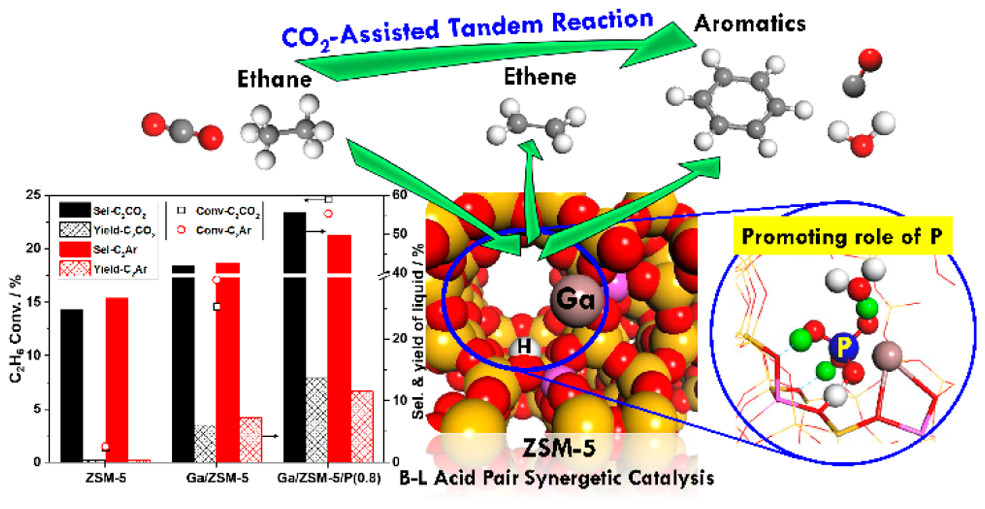(231c) Enhancing the Tandem Reactions of CO2-Assisted Ethane Dehydrogenation and Aromatization
AIChE Annual Meeting
2022
2022 Annual Meeting
Catalysis and Reaction Engineering Division
In Honor of the 2020 R.H. Wilhelm Award Winner I (Invited Talks)
Tuesday, November 15, 2022 - 8:45am to 9:06am
Combining CO2 reduction with the tandem reactions of ethane dehydrogenation and aromatization can potentially produce valuable liquid products while consuming a greenhouse gas in a one-step process. Aromatization of light alkanes is of great interest because this can expand the raw materials used to produce aromatics to include fractions of natural gas that are readily available and inexpensive. There are at least two key challenges to overcome for achieving CO2-promoted aromatization of ethane: (1) the catalyst must activate both CO2 and the alkane and (2) the catalyst should exhibit long-term stability in the presence of water that is produced from the reactions of CO2. Flow reactor studies measuring both the CO2-assisted oxidative dehydrogenation and direct dehydrogenation and aromatization of ethane over unmodified as well as gallium (Ga) and phosphorous (P)-modified ZSM-5 catalysts were performed at 873 K and atmospheric pressure. The addition of phosphorous at an optimal loading improves the hydrothermal stability of Ga/ZSM-5, reduces coke formation on the catalyst surface, and allows the formation of more liquid aromatics through the tandem reactions of CO2-assisted oxidative dehydrogenation of ethane and subsequent aromatization. Density functional theory calculations provide insights into the effect of Ga- and P- modification on ethane dehydrogenation to ethylene as well as the role of CO2 on the production of aromatics.

